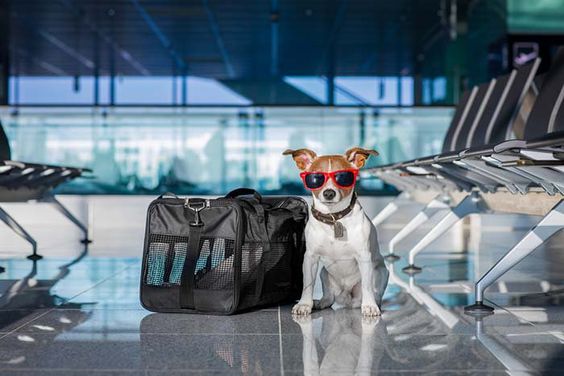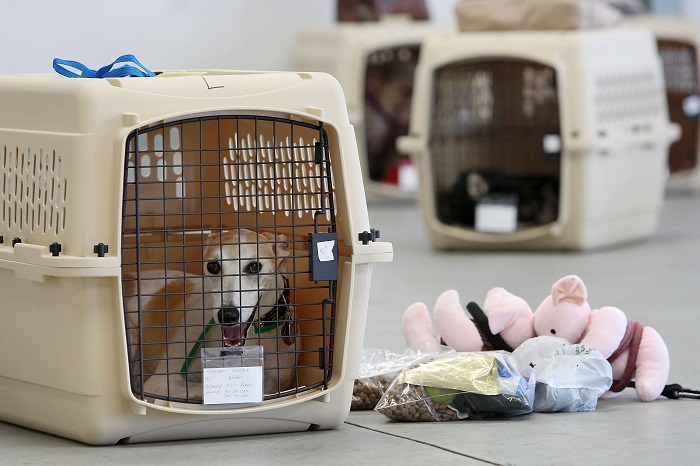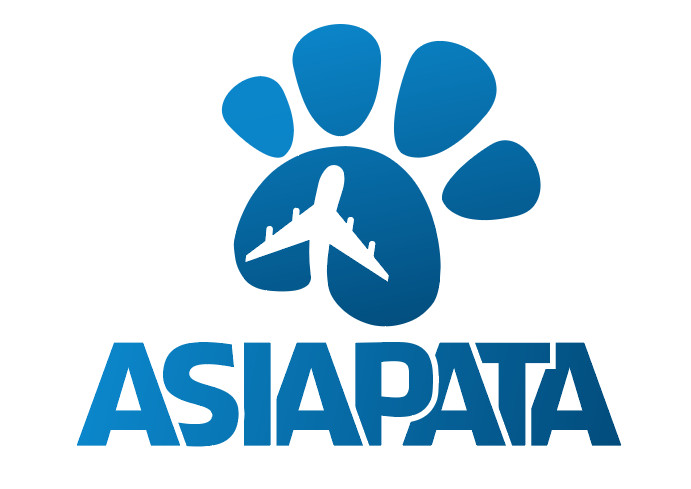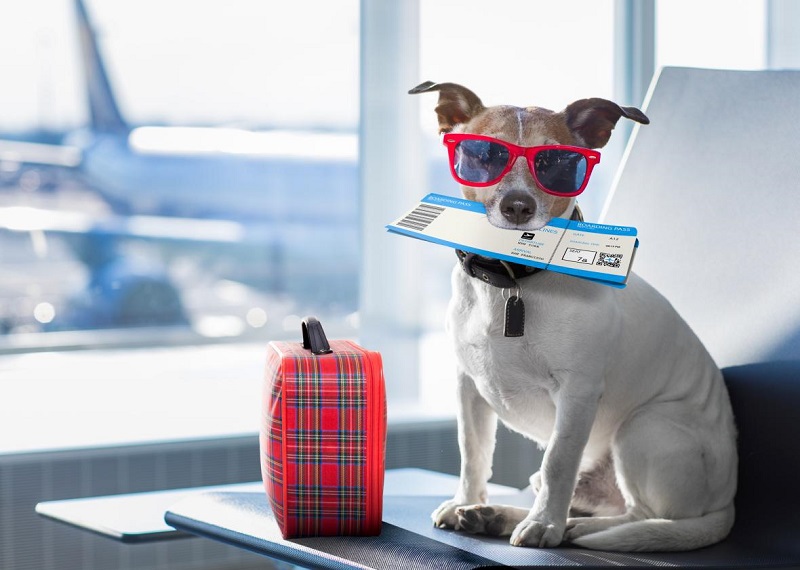Flying with Pets: Air Travel Process & Real Experiences
Introduction
With more people treating their pets like family members, it’s no surprise that traveling with pets, especially by air, has become increasingly popular. Whether it’s a domestic getaway or an international adventure, flying with a pet can be a rewarding yet complex experience. This comprehensive guide will walk you through the entire process of traveling with pets by airplane, from preparation to arrival, while sharing real pet travel experiences to give you a realistic view of what to expect.
1. Can Pets Fly on Planes? – Understanding the Basics

The short answer is: yes, pets can fly. But how and where your pet flies depends on several factors:
-
Airline policies
-
Pet’s breed and size
-
Destination (domestic or international)
-
Weather conditions
-
Health and age of your pet
Pets typically travel in one of three ways:
-
In-cabin: Small pets that meet weight and carrier requirements.
-
Checked baggage: Pets travel in the cargo hold but are booked on the same flight.
-
Manifest cargo: Used for larger pets or unaccompanied animals, often managed by a third-party pet relocation service.
2. Pre-Flight Checklist – How to Prepare Your Pet
Book Early and Call the Airline
Pet spots are limited per flight. Once your flight is confirmed, call the airline directly to:
-
Reserve a spot for your pet.
-
Confirm pet policies and fees.
-
Get the latest pet travel requirements.
Each airline has specific rules, so always check the pet travel section on their official website.
Visit the Vet
A pre-travel vet visit is mandatory:
-
Ensure vaccinations are up-to-date.
-
Get a health certificate issued within 7–10 days of travel.
-
Ask for recommendations to keep your pet calm during the flight.
Tip: Some destinations require rabies titer tests or specific parasite treatments, especially for international flights.
Choose the Right Carrier
Your pet’s carrier must meet IATA standards:
-
Comfortable, well-ventilated, and escape-proof.
-
Enough space for your pet to turn around and lie down.
-
Soft-sided for in-cabin pets; hard-sided for cargo.
Label the carrier with:
-
Pet’s name
-
Your name and contact info
-
“Live Animal” stickers
Pack a Pet Travel Kit
Include essentials like:
-
Food and water bowls
-
Leash and collar
-
Pet wipes and disposable pads
-
Favorite toy or blanket
-
Medical records and ID tags
3. At the Airport – What to Expect

Arrive Early
Arrive at least 2–3 hours early to allow time for:
-
Paperwork verification
-
Pet check-in procedures
-
A final bathroom break
Security Screening
For in-cabin pets:
-
You’ll carry your pet through the metal detector.
-
The carrier goes through the X-ray machine.
-
TSA may swab your hands for explosive residue.
Important: Never put your pet through the X-ray machine!
Pet Relief Areas
Most major airports now offer pet relief stations post-security. Use them to keep your pet comfortable before boarding.
4. In the Air – How Pets Travel
In-Cabin Pets
If your pet is small enough to fly in-cabin:
-
The carrier goes under the seat in front of you.
-
Your pet must remain in the carrier at all times.
-
No opening the bag during the flight.
Pros: Constant supervision, reduced stress
Cons: Limited space, extra fee (usually $75–$125)
Checked Baggage / Cargo Pets
For larger pets:
-
Flown in temperature-controlled, pressurized cargo holds.
-
Fed and hydrated before the flight (but avoid overfeeding).
-
Most airlines won’t fly pets in cargo during extreme weather.
Pros: Suitable for large breeds
Cons: Less personal supervision, potential for anxiety
5. Arriving at Your Destination
Pick-Up Procedures
-
In-cabin pets: Leave the airport together.
-
Checked pets: Pick up at the baggage claim or cargo area.
-
Cargo-only pets: Head to the airline’s cargo facility.
Inspect Your Pet
Check for any signs of distress, dehydration, or injury. Offer water immediately and a safe space to recover from the trip.
6. Real Pet Travel Experiences – What Pet Owners Say
Case 1: Bella the Cat – In-Cabin Domestic Flight (USA)
Bella, a 4-year-old tabby cat, flew from New York to California with her owner, Jess.
“I was nervous about Bella flying, but JetBlue made the experience smooth. I bought her a soft Sherpa carrier, and she stayed calm the entire time. TSA was gentle, and I appreciated the pet relief station at JFK.”
Takeaway: In-cabin travel can be stress-free with the right carrier and a calm temperament.
Case 2: Max the Golden Retriever – Cargo Flight to Europe
Max flew from Toronto to Paris with the help of a pet relocation agency.
“Max is a big boy, so he had to go as manifest cargo. The pet travel agency handled everything: crate requirements, customs, and quarantine rules in France. He arrived a bit tired but totally healthy.”
Takeaway: Large dogs need professional handling, especially for international flights.
Case 3: Mochi the French Bulldog – Caution for Short-Nosed Breeds
French Bulldogs like Mochi face higher risks due to breathing issues.
“I wanted to fly with Mochi, but the airline refused to accept brachycephalic breeds in cargo. I ended up using a pet ground transport service instead.”
Takeaway: Brachycephalic (short-nosed) breeds are often restricted from flying in cargo due to health risks. Always check with the airline first.
7. Airline Pet Policy Highlights (Popular Airlines)
| Airline | In-Cabin Pets | Cargo Pets | Fees (approx.) |
|---|---|---|---|
| American Airlines | Yes | Yes (weather-permitting) | $125 in-cabin |
| Delta Airlines | Yes | Yes | $95–$200 |
| United Airlines | Yes | Only via PetSafe program | Varies by size |
| Southwest Airlines | Yes (domestic only) | No | $95 in-cabin |
| Air France | Yes (up to 8kg) | Yes | €40–€300 |
Note: Fees and policies can change, so always confirm with the airline before booking.
8. Tips for a Smooth Pet Travel Experience
-
Avoid sedatives: They can affect breathing and temperature regulation.
-
Choose direct flights: Minimize layovers and stress.
-
Hydrate but limit food: Prevent motion sickness.
-
Train early: Get your pet used to the carrier weeks before the flight.
-
Document everything: Especially for international travel (vaccines, permits, import forms).
9. International Travel with Pets – What to Know
Traveling across borders with pets involves:
-
Import/export permits
-
Quarantine regulations
-
Microchipping
-
Rabies titer tests (EU, Australia, etc.)
Some countries (like Australia or New Zealand) have very strict rules and may require months of preparation. A pet relocation specialist is highly recommended for such destinations.
Conclusion
Flying with your pet can be a safe and enjoyable experience with the right preparation and understanding of the process. Whether your pet fits under the seat or needs to travel in cargo, being informed is key to ensuring a smooth journey. With growing awareness, better facilities, and more pet-friendly policies, air travel with pets is no longer just possible—it’s becoming a norm.
So, pack those pet passports and carriers—it’s time for your furry friend to see the world!
Xem thêm:
- Pet festivals in Japan and Korea and around the world
- How to help and help get involved in animal protect campaigns

